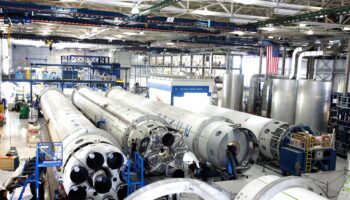Introduction:
As the aviation industry embarks on a quest for sustainability and innovation, electric planes have emerged as a beacon of promise in shaping the future of flight. With environmental concerns intensifying and technological advancements accelerating, the allure of electric propulsion systems holds the potential to revolutionize air travel, heralding a new era of cleaner skies and more efficient journeys.
Eco-Friendly Skies:
Electric planes offer a compelling solution to the aviation industry’s carbon footprint, as they generate significantly fewer emissions compared to traditional jet engines. The reduction in greenhouse gases and air pollutants aligns seamlessly with global efforts to combat climate change, making electric planes a key player in achieving a sustainable aviation sector.
Quiet Revolution:
The decibel levels of airports and surrounding communities could experience a transformative reduction with the rise of electric planes. Electric propulsion systems operate quietly, diminishing noise pollution and potentially enabling airports to operate more conveniently in urban areas. This noise reduction opens up new possibilities for expanded flight routes and reduced disturbances for those living near airports.
Innovative Design:
Electric propulsion necessitates novel aircraft design, propelling the industry into an era of innovation. The removal of bulky fuel tanks and exhaust systems creates opportunities for sleeker, more aerodynamic shapes, potentially leading to improved fuel efficiency even in non-electric aircraft. Electric planes also facilitate distributed propulsion systems, allowing for inventive aircraft configurations that challenge traditional norms.
Reduced Operating Costs:
Electric planes have the potential to substantially lower operating costs over time. Electricity is generally more affordable than aviation fuel, and the reduced complexity of electric propulsion systems could translate into fewer maintenance requirements. These cost savings could reshape the economics of aviation and, in turn, make air travel more accessible.
Regional Travel Revolution:
Electric planes are particularly suited for short to medium-haul routes, which constitute a significant portion of air travel. Their efficiency and reduced emissions make them well-suited for regional flights that connect smaller cities and towns. This could lead to a renaissance of regional air travel, boosting economic development and connectivity in previously underserved areas.
Challenges and Infrastructure:
Despite the promise, challenges remain on the path to widespread adoption of electric planes. Battery technology must evolve to provide the required energy density for longer flights. Moreover, the development of charging infrastructure at airports poses logistical and financial hurdles. Overcoming these challenges will require collaboration between governments, industry stakeholders, and technological innovators.
Conclusion:
As the aviation industry takes bold strides toward sustainability, electric planes emerge as a potent catalyst for change. Their potential to redefine air travel by offering cleaner skies, quieter operations, and innovative designs ignites a vision of an aviation sector that harmonizes with environmental and technological progress. While hurdles lie ahead, the trajectory is clear: electric planes are poised to carve a remarkable trajectory toward a greener, more efficient, and interconnected future of aviation.
- THE EVOLUTION OF PLASTIC SURGERY - 17 June 2024
- CHOOSE THE RIGHT PERSONAL INJURY LAW FIRM IN CHARLOTTE NORTH CAROLINA - 16 June 2024
- Email UX optimization, offering actionable insights - 16 June 2024





